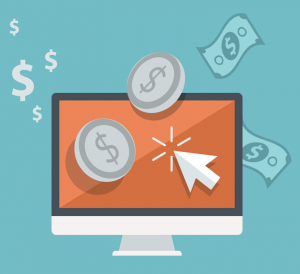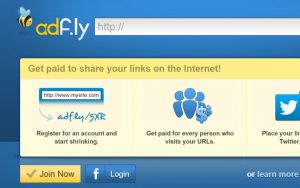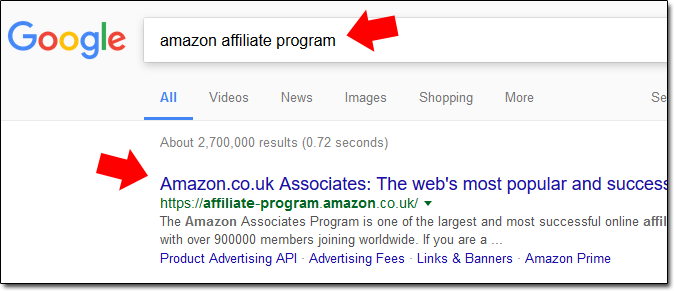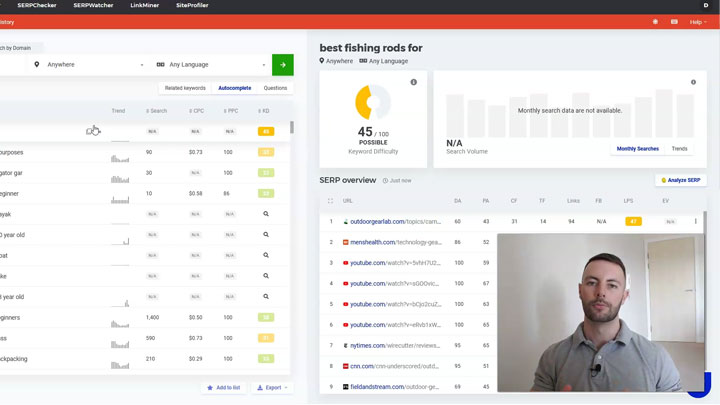Blogging is fun, that’s for sure – but it’s certainly a lot more fun when you’re making money from it too.
So with that being said, in this post, I aim to list a whole bunch of different ways that you can make money from your blog… And not just any old list, I’ll be listing the best ways to make money blogging.
Regardless of what niche you’re in, whether you’re blogging about farming or hairdressing, I intend on this being the go-to guide for learning how you can cash in on your passion & type your way to the bank. Heh.

Oh, and if you don’t already have a blog yet (why the heck not??) – be sure to check out my step-by-step guide here which will teach you how to set one up.
Because let’s face it, it’s 2025 and if you don’t have a blog yet then you need to get your butt into gear and get yourself one.
Blogging is the future (for real).
And for those of you who aren’t really bothered about making money from your blog & just want to write about your passion, this guide is still applicable to you.
Why?
Well because if you’re blogging, regardless of whether you’re doing it for fun or for business you still have the same opportunity to make money, so why leave that money sitting their on the table? Heck if you don’t want then give it to charity, but don’t leave it sitting there doing nothing.
So without further ado let’s dive right into the meat & bones of this post…
We’ll start from the more mainstream methods, then divulge into the not-so-mainstream methods.
1. Paid Advertising

And it’s fairly obvious as to why paid advertising is one of the more popular methods since is super easy to implement & fairly profitable for near enough every single niche out there. Paid advertising is pretty much a win-win as it can generally also run in harmony alongside most other money-making opportunities too.
So if you haven’t already deployed paid advertising onto your blog, then it’s certainly something you should be at least looking into.
Paid advertising is a very simple model – it’s a case of placing adverts on your website & earning money each time they are either viewed, or clicked.
There are 3 common paid advertising models that you’ll see about and they are:
- CPM
- CPV
- CPC
CPC is generally the most popular choice of ad for bloggers to display as it stands for “Cost Per Click” and means that the advertisers will pay you a fixed amount each time somebody clicks on them. The amount varies, but in some niches it can be shockingly high.
CPV is an alternative which stands for “Cost Per View” and as you can probably guess this is where advertisers pay publishers each time their ads receive a view. This might sound more appealing, but since it’s a lot easier to get a view than it is to get a click the payouts tend to be much, much lower.
CPM is similar to CPV, but this model pays out a certain amount for every 1,000 views as opposed to every single view. Again the rates for CPM are generally much lower than that of CPC ads since it’s much easier to get views on the ad than it is to get somebody to click through it.
When you place adverts on your blog you want the adverts with the highest comparable CPC, CPV or CPM taking priority because this means they’re going to be paying you the most.
Now the important thing to note is that there are 2 main different routes you can take when it comes to paid advertising. You can manage the adverts yourself or you can use a third party to do it instead.
Most people tend to use a third party such as Google Adsense since it makes life much easier (and it’s definitely the recommended option if you’re just starting out).
However, if you’re a bit more advanced & your blog is generating a fairly substantial amount of traffic then you might want to look into to managing the adverts yourself.
This will enable you to dodge, or at least reduce the percentage that the third party companies take off your profits for the privilege of managing them.
When it comes to managing them yourself you could literally deal with advertisers directly & manually switch the ads around on your blog if you like, but a much better option would be for you to use a platform like BuySellAds instead.
BuySellAds gives you an easy to use platform to sell adverts on your website yourself – and their system will automatically switched the adverts around for you when their campaigns come to an end.
But as a newcomer I’d suggest sticking with a 3rd party – it’ll make your life much easier. The benefit of self-managing your ads when you’re first starting out probably wouldn’t be all that great & it could in fact actually earn you less money because of the lack of advertisers.
So if you’re interested in trying out paid advertising, then here’s a handful of ad companies that you can join & try out on your blog:
Google Adsense – Some people might argue that there are better or higher paying ad companies out there than Google Adsense, but Adsense will always be my number 1 recommendation as the go-to company for anybody looking to get started making money from paid advertising on their blog. They have an amazing platform, a TON of advertisers & of course, a solid reputation too. The only downside (as some might see it) is that they have a strict policy as to what kind of websites they allow to join their program, but providing your website’s all above board & packed with quality content then you shouldn’t have any issues in getting your account approved.
Media.net – This is one of the leading Adsense alternatives, and again another company with a solid reputation since it’s part of the Yahoo! and Bing network. They are also boast the second largest revenue of all the contextual advertising platforms out there too so you can rest assured they’re a big player & have plenty of advertisers.
PropellerAds Media – This is a network that has a primary focus on pop-unders as opposed to banner advertising, which in certain niches could prove to be much more profitable. Now I’d only ever recommend adding pop-unders to your website if you really know what you’re doing as they be very damaging to the users experience & of course your website’s search engine optimisation too, but if pop-unders are your thing then this is an awesome website for you to try out.
Infolinks – This company is another major player in the paid advertising realm & it’s made the list because of it’s innovative advertising approach. They offer traditional banner, text & video ads but one of their revolutionary creations was the “in-line link” advertisement. Basically you add a bit of code to your website & the Infolinks system automatically hyperlinks relevant words or phrases within your content to their advertisers, meaning you earn money each time the links are clicked. Some users find it intrusive, but it’s definitely worth a trial run at least to see how it performs with your audience.
Chitika – This company is actually extremely similar to Google Adsense & it’s very popular too as an Adsense alternative. One of the best things about Chitika is that their ads can actually be ran alongside your Google Adsense units, so you could essentially battle the networks off against each other and boost your sites earnings by displaying the highest paying ad from the 2 networks. It’s a bit of an advanced method, but one that can certainly help you make a lot more money.
2. Affiliate Marketing
It’s certainly possible for paid advertising to provide you with a “full-time” income on it’s own, however many choose to supplement it with affiliate marketing (and I’d massively recommend you do so) because affiliate marketing can help take your income to the next level.
There are several bloggers whose affiliate income alone generates them as much as 6 figures per month (yes – $100,000+ per month) so affiliate marketing is certainly not something that should be overlooked. It can provide an awesome opportunity for you to be able to cash in on your blog & take your passion for writing full-time.
And believe it or not, generating a modest income with affiliate marketing isn’t actually all that difficult.
It might take you a little while to gain momentum & get things off the ground, but once you do you’ll find that making money through affiliate marketing is actually pretty easy – and that there are many, many very lucrative programs out there for you to go ahead & cash in on.
Now affiliate marketing is actually quite similar to paid advertising in the fact that you’ll be promoting companies or services on your blog, but the main difference is that instead of getting paid for clicks or views you’ll be getting paid when the user completes an action instead.
The particular “actions” that you can get paid for vary massively, but generally they include things like getting somebody to sign up to something, or getting somebody to make a purchase.
Once you successful manage to do that, you’ll either be paid a flat rate for the action, or you’ll be paid a percentage of the final sale value.
So whilst it might be harder to get somebody to complete an action than it is to get them to view or click on advert, the upside is that the rewards are generally much greater than that of paid advertising.

It’s therefore safe to say that affiliate marketing has the potential to be extremely lucrative – and the best part is that it’s super easy to get involved.
All you need to do is simply join up to a companies affiliate program, and then promote their product or service through your unique tracking link.
Tracking links vary, but they usually looks something like this: http://www.company.com/?id=123
It’s basically just a link with a unique ID that tracks all sales (or actions) back to you, so that the relevant commissions can be credited to you.
And the best part is that you can usually (depending on the companies terms) promote your link elsewhere too, such as through an email marketing campaign.
This is a huge bonus because it gives you the added opportunity to earn from other areas as opposed to being restricted from earning purely from traffic to your blog like you are with paid advertising.
So how can you find an affiliate program to promote?
If there’s a specific company or product you’d like to promote then the easiest way to find out if they have an affiliate program or not is to simply run a quick Google search.
All you need to do is run a search for “company name + affiliate program”, like so:
That will generally take you to the company website’s affiliate page, and from there you’ll be able to find details of how you can join their program (if they have one).
Some companies run their affiliate programs through third party networks such as Commission Junction, whilst others manage the programs themselves.
Where possibly I always recommend joining a company through a third party network as opposed to working with them directly, because this way you have added protection & it’s less likely that they’ll attempt to “shave off” any of your commissions (yes, unfortunately, that happens – even by the biggest companies).
I’d say that you should only ever work with a company directly if that’s the only option, and I’d recommend keeping a close eye on your sales to make sure they’re being honoured by the program. I’ve personally been burned in the past, so just trying to avoid the same happening to you.
Here’s a handful of affiliate networks you can join & browse…
Commission Junction – This is one of my personal favorites – not for any particular reason, but because I’ve worked with many advertisers through them for several years and have had absolutely no issues whatsoever. Touch wood everything has ran seamlessly for me with this network & most importantly they always pay on time.
Amazon Associates – This is an affiliate program in itself as opposed to a network, but the reason I listed it is because it’s so huge. By joining up to the Amazon affiliate program (named Amazon Associates) you have the ability to promote near enough all the products through the whole Amazon network, which can be an amazing opportunity depending on your niche. The only downside is that (in most instances) their cookie only lasts 24 hours unlike 30 days with most other programs. This means that your prospect will need to make a purchase within 24 hours of clicking your link for you to be credited a commission for the sale.
Rakuten Linkshare – Whilst I personally haven’t had a great deal to do with Rakuten Linkshare, I’ve been assured by numerous sources that they’re an awesome network & a great place for new affiliate marketers to get started. They’re one of the largest affiliate networks out there & have a solid reputation.
eBay Partner Network – Again, just like the Amazon program that was mentioned above – this is not a network, but an affiliate program in itself. You’re most likely already aware of how huge eBay is so having the ability to earn commissions by promoting products through eBay is a great opportunity which is why it’s made this list.
ClickBank – For people wanting to promote digital products such as eBooks & courses then ClickBank is the go-to site for that. Generally digital products have higher product margins since there’s no shipping or handling fees and as a result several of the products on ClickBank pay out huge commissions. There’s products on there to suit almost any niche, but one thing I’d recommend is trying them out before recommending them on your blog because there’s a few on there that I’ve found to be lacking value. You don’t want to end up recommending naff products to your subscribers, so do your groundwork first.
ShareASale – I personally use ShareASale and I can’t say I’ve ever ran into any problems with them. They’re a huge network with a long list of advertisers & they’ve always paid out on time. ShareASale is a popular choice for many affiliate marketers & it’s a company that gets a thumbs up from me.
Affiliate Window – I feel that this network is a little less mainstream than the others, but this is one of the first networks I started out with and it’s a company I’ve stayed with right to this very date. They’ve always paid out on time & they have quite a lot of offers that are exclusive to their network with excellent payouts. I think their programs seem to have a primary focus on Europe/USA but I do think they’re pushing to go global so definitely worth checking out regardless of where your target market lies.
3. Premium Content (with a twist)

Now typically people think that this means charging your readers a monetary fee to access it, but I’m going to share an alternative method with you which can prove to be extremely lucrative (and much better for your readers).
But before I get onto that, let’s take a look into charging your readers a fee – because that can still be a very effective way to make money from your blog.
For example, let’s say you run a blog about weight loss, and you decide to put together an awesome diet plan that you think your readers will really enjoy.
Why not charge them to gain access?
I mean sure it’s always nice (and important) to give value to your readers for free, but every now and then it doesn’t hurt to ask for something in return.
Paid premium content can be an awesome and easy way to make money from your blog, but if you take this route then you’ve got to be sure to give your readers massive value in return for their money.
If you exceed your readers (buyers) expectations then they’ll be more likely to purchase any future premium content you decide to release later down the line, and obviously the last thing you’d want to do is end up disappointing them by charging for low quality content.
There’s a whole bunch of different WordPress plugins available that will easily enable you to lock your premium content away & require people to make a payment to be able to access it. Check them out here.
But what’s the alternative?

CPA simply stands for “Cost Per Action”, and what a CPA Content Locker does is basically lock your content away until the visitor completes a specific action to access it. A typical action is something such as completing a survey, installing an app or signing up to an offer.
As you’ve probably guessed, you’ll get paid for each person that completes the action (hence the name).
This means that you can lock away your premium content & people can gain access to it for free, but you’ll still get paid. It’s a win-win.
The only downside is that some people don’t like completing these types of offers, and depending on your audience you may pee-off a few of your readers.
However, as with anything you’ve got to try it to find out.
CPA Content Lockers are usually very easy to implement, and simply require adding a small bit of code to the page you wish to lock.
The best CPA Content Locking network I could personally recommend is a company named CPALead. I’ve worked with them for several years and they are hands down the best network for CPA content locking offers that I’ve ever come across.
An alternative I could recommend is a company called ShareCash. This isn’t a content locking application as such, it’s a PPD site (pay-per-download) which would mean you’d have to physically upload your content & share the link with your readers, but the end result is pretty much the same. They get the file & you get paid.
4. Full On Membership Site

As you can probably imagine there are very few niches this type of site is effective in, but if you’re able to provide content for a niche that simply can’t be found anywhere else then this can certainly prove to be a very lucrative method indeed.
The biggest downside to this method is that since you’re site is locked down it’ll mean you’ll lose out on a lot of free traffic, such as that from search engines & social media. You must therefore be either prepared to pay for traffic or simply rely on word of mouth & referrals to get the site off the ground.
When it comes to membership sites the one important thing to remember is that if people can get what you’re offering elsewhere for free, then they’re not going to pay you for it. You’ve therefore either got to go to town on the value you give, or provide something super unique that’s never been done before.
If you’re interested in starting a WordPress membership site then MemberPress could be just the plugin you need.
5. Creating & Selling Your Own Product

The reason for this is because as an affiliate marketer you’re effect doing the groundwork for somebody else.
Whoever has created the product or service that you’re promoting is making money from your efforts.
Therefore to get to the top of the chain & turn the tables around you eventually need to create your own product & then leverage affiliates to build your income.
I appreciate that it’s a lot more difficult to create your own product than it is to promote somebody else’s, but that’s why the reward is so much greater.
By leveraging affiliates to promote your product, you will not only be able to build a bigger income, but you will be able to build a more sustainable one & one that requires much less of your time once it’s off the ground.
Of course, your product has to provide massive value to the marketplace to be truly effective, and admittedly it will probably take a few failed attempts for you to get there. (I’m talking from experience – LOL).
But once you do, you can pretty much consider yourself as having “nailed it”.
6. Make Money From Your External Links

Admittedly this isn’t a method that is going to make you an overnight millionaire, but it’s certainly something that will help supplement your income – and when it comes to online marketing every little certainly helps.
There’s a website named AdFly that enables you to shorten & then monetize your links with ease.
When you link to a website through AdFly, the person who clicks on the link will be shown an advert before they can proceed to whichever website it was that you were sending them to.
It can be an annoyance for many users, so again it depends on your audience – but ultimately if they’re leaving your website anyway, what’s the harm in making a little bit of cash from their exit?
It’s worth mentioning too that this doesn’t necessarily have to be restricted to your external links – but it would definitely be annoying if you were displaying ads in between all of your internal links too & would most likely (probably definitely) cause your users to leave.
7. Donations
From around 2003 to 2008 donation boxes were literally everywhere on websites, but here in 2017 they seem to have been forgotten as people begin to chase bigger riches.
The truth is that donations should never be cast aside as depending on your audience & the value you give, donations can make up a great portion of your websites income. With PayPal making it so easy to add a donation button to your website you have no excuses not to have one – and you might be pleasantly surprised.
8. Use Your Blog As a Vehicle For Your Business

As an example, if you were a lawyer then you could start a blog about the particular type of law you specialize in.
This will naturally attract people interested in your service, and then you can simply use your blog to promote it to them.
You’ll find that this type of promotion will get you super-targeted leads for your business, because not only are they already interested in what you have to offer, but they’ll have “warmed up” to you after reading through your blog.
I’d go as far as to say that if you offered out good value on the blog then you can pretty much assume a sealed deal with your prospects before they even pick up the phone to call you. So if you have a business, or you have a service you can offer & you’re not using a blog to promote it – then you definitely need to start.
Wrapping It Up…
Paid advertising & affiliate marketing are the perfect places to start if you’re looking to make money from your blog, and the truth is that these 2 methods alone could quite easily see you generating a modest income.
Whilst there are other various methods that you can use to make money, such as monetizing links & charging for premium content as we spoke about above, these types of thing are generally more intrusive which means they ultimately damage your users experience.
To have a successful blog the one thing you should focus on more than anything else is providing an awesome user experience.
Your blog should provide people with an easy way to obtain the information they need, and you should always over deliver with value.
You don’t really want to be locking away content, charging fees, pushing offers or adding delays to their exit.
The reality is that if your already running paid advertising & affiliate marketing on your blog and it’s not making the type of income that you want it to make, then whilst adding more income streams might seem like the answer – the chances are it’s not the true fix to the problem.
The first thing you’ve got to take a look at is your blogs traffic (the amount of visitors you are getting).
To make money from your blog you need eyeballs on your content & eyeballs on whatever it is you’re promoting.
Your income will always be proportional to the amount of visitors your blog is getting, so whilst yes, there are things you can do to increase your earnings per visitor, generating more targeted traffic will always help you to increase your income.
And to follow on from that, once your blog is generating a strong flow of traffic then as opposed to simply throwing more income streams to the situation you need to look at improving the conversions on the ones you already have.
Play with your ad placements, play with the colours, make them stand out, make them blend in… See what works best.
Try out different affiliate programs & get a feel for what converts best with your audience.
The general concept of making money is the same from blog to blog, but what works best on each individual blog will always diff so it’s ultimately a case of trial and error.
Even when you become advanced & start generating a large income from your blog, it’s still a case of playing around and I’m sure any online marketer will agree.
The difference between being advanced and being new is simply that as an advanced marketer you can get a general feel for a website & have a rough idea where to start.
But one of the most important things you should be doing if you’re not already is building an email list, and following up with your list regularly to keep them engaged with yourself & your blog.
When I first started out with affiliate marketing I just placed a whole bunch of links & hoped for the best. I managed to make a little bit of money, but it was nothing life changing.
Then, when I introduced email marketing into my business things changed dramatically.
After capturing emails & beginning to follow up with my subscribers my income went through the roof.
The reason for that is because people generally don’t make a purchase on their first exposure to something. There’s various different reasons as to why, but the bottom line is they just don’t – people generally need to see something a handful of times before they go ahead & make a decision to buy in.
Therefore by capturing emails & following up with your subscribers, giving them repeat exposure to whatever it is you’re promoting you can massively increase your blogs income.
Most people who click your affiliate links will buy, just not on their very first click.
Email marketing helps you convince them, and as the saying goes, that’s why the fortune is in the follow up.
Click Here To Learn How You Can Start Email Marketing (the easy way).
So I hope this post was insightful, and provided you with value. If you feel that there are any particular streams of income that I’ve missed out & that you feel should be included on this list then be sure to leave a comment below and let me know.
And of course if you have any questions be sure to leave a comment too as I’m always happy to do my best & try to help you out. 🙂





Excellent Information Dale, I spent hours pouring over it all. I know ZIP about Blogging, still learning about HTML and constructing my website, which has not been monetized yet. Reading this Blog of yours has inspired me to try out affiliate marketing first. It would be an honour to promote your blog on my website, if that is OK with you. Still soooo much to do and things to learn about all of this. I love it. The perfect retirement activity for a senior of 66 years. Check out my site and let me know if you find it interesting. Thanks Dale, infinite blessings to you, Max
Hi Max, you’re very welcome & thank you for the comment. Affiliate marketing is an excellent way to monetize a website & if you’re looking to get started with it then I highly recommend checking out the Wealthy Affiliate training ground as that’s an excellent place to learn (and you can get started with their course for free). They also have a great site builder named SiteRubix which saves you all the hassle of having to code the HTML yourself. Definitely worth checking out, I think it’d be a good fit for you after taking a look at your website – it’d certainly help you take it to new heights. 🙂
Dale, I just wanted to say this is one of the best pieces of information I have read about making money online and building lists. You’re obviously a pro and in the know. I just wish you and I could get together and really educate worldwide on a huge scale.
I am in video, AI, chabots, marketing, SEO, and WordPress training. My goal is to create thousands of jobs worldwide, and for the last three years, the plan is almost there.
Thanks Ken, really appreciate your comment… And yes I’d love to put a lot more education out there too (and do have plans to do so) but right now I have so many things in the pipeline it’s a little hectic to say the least. I wish you the best on your endeavour though. 🙂
Hey Dale this piece is full of content ,I have a few questions though reach me on email
It’d be easier if you just ask your questions here, Cheryl. That way other readers can benefit from the answers too.
how much time commitment do you think this program will take to set it up the first time and also to maintain the blogging? Is it something you write the article once and then forget it? or do you need to write an article everyday to see some kind of result? Is this an 6-8 hours/day business?
Once you write an article, it will stay around for as long as you keep your blog/website active meaning that you can stand to earn commissions from it for many years to come, all from that initial one-time effort. Of course, however, the more articles you add, the larger you can grow that income & the sooner you can begin generating those commissions. You can put in as much (or as little) time into it as you like, just know that the more time you spend on it, the sooner things will happen.